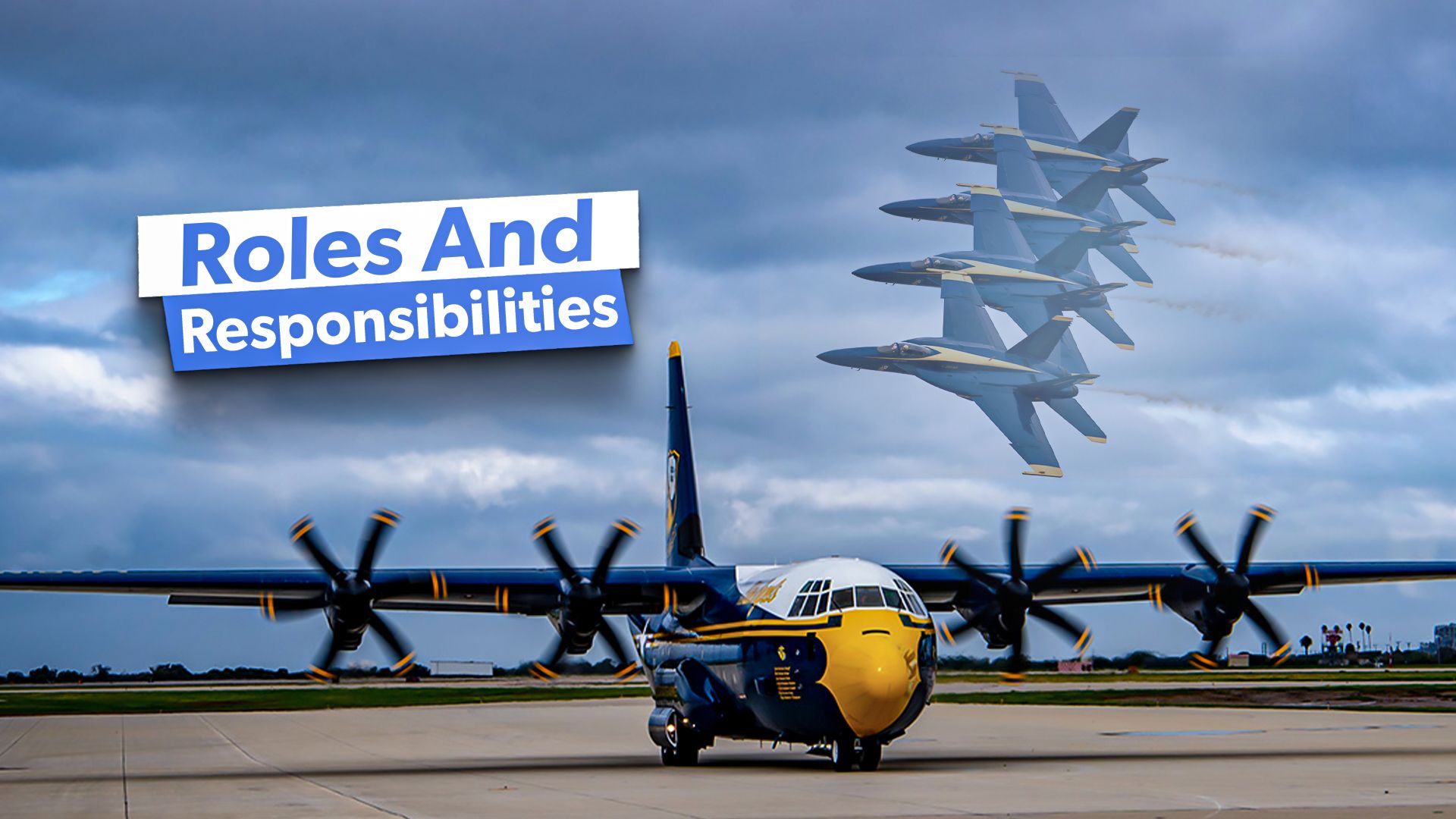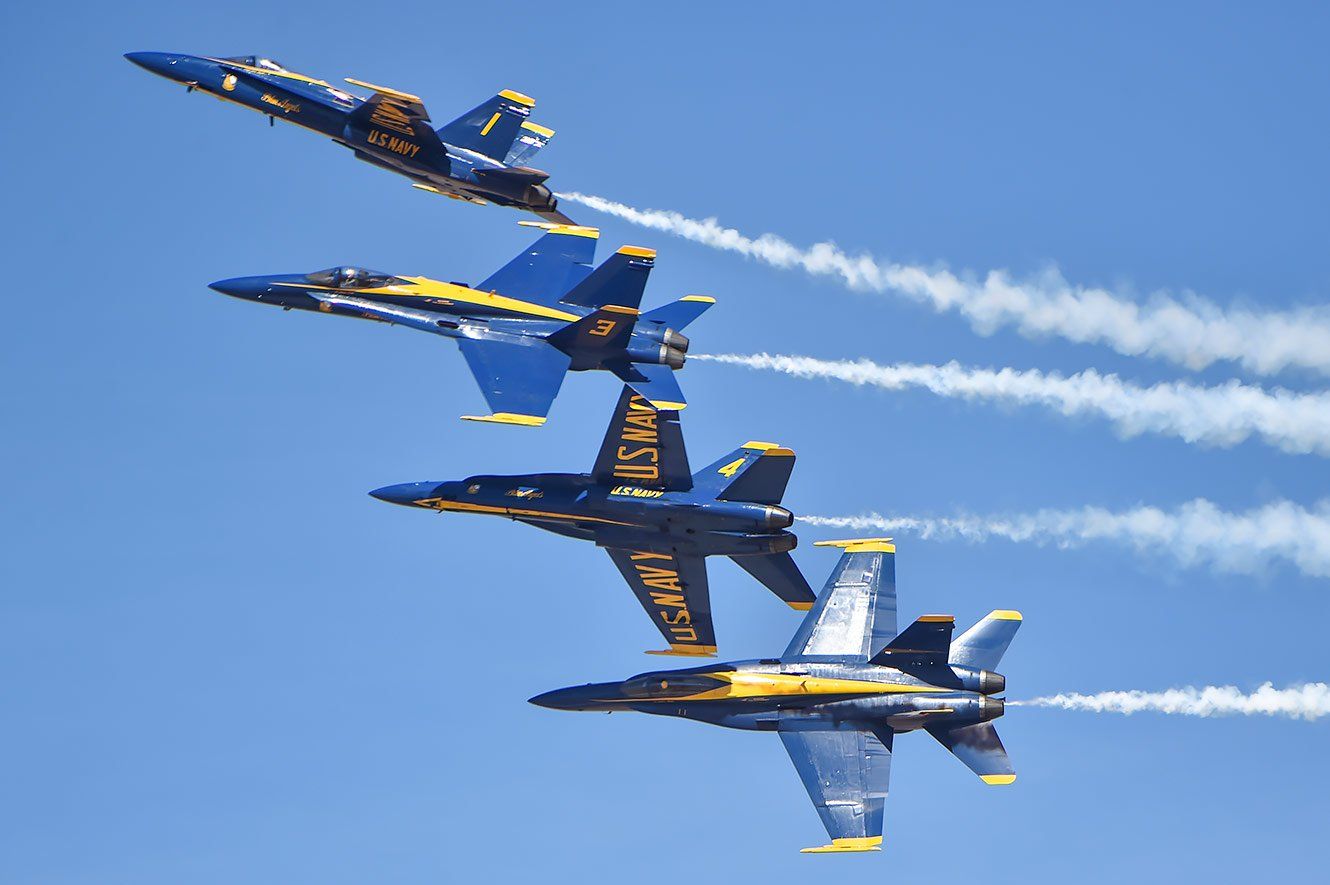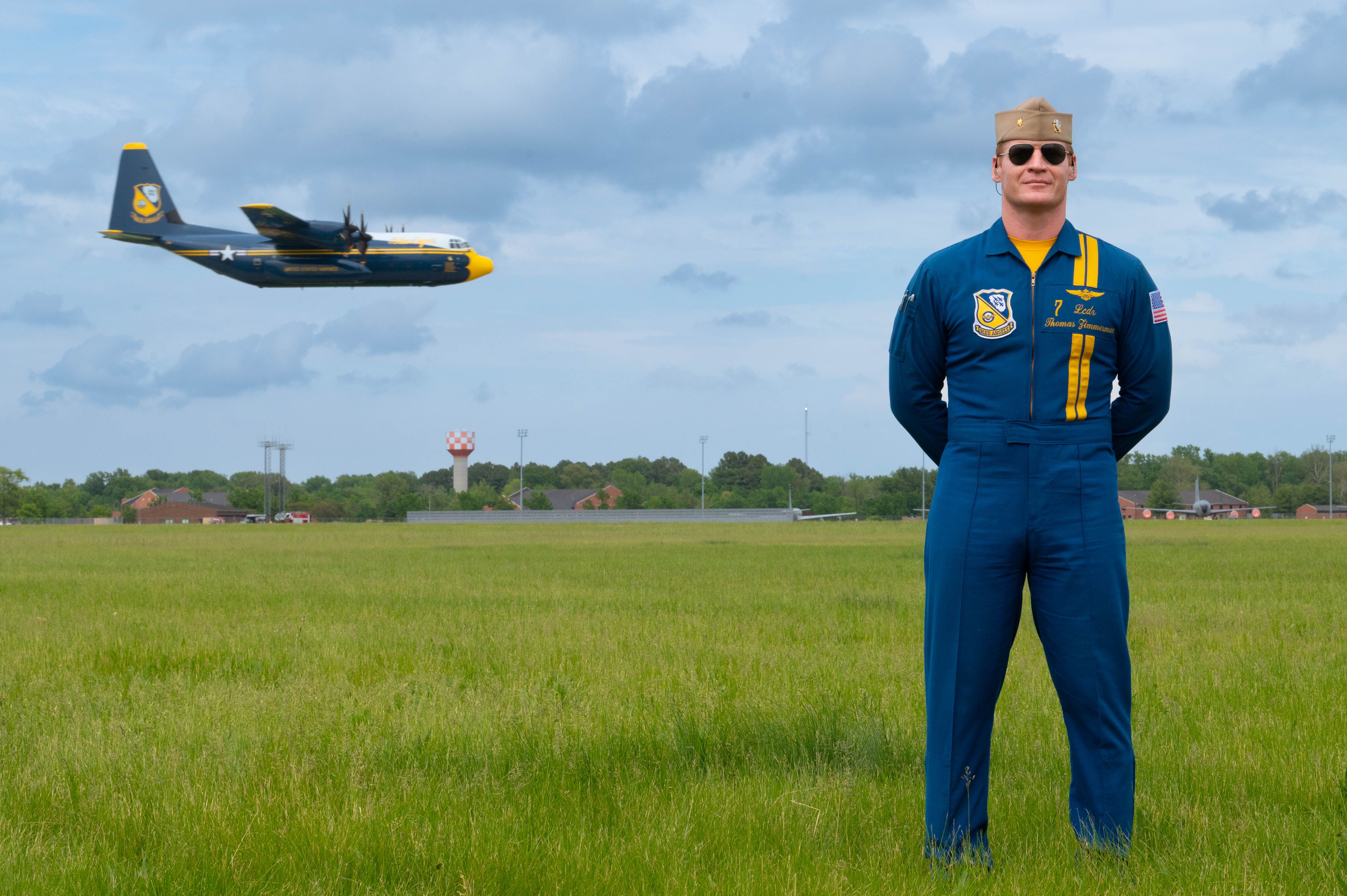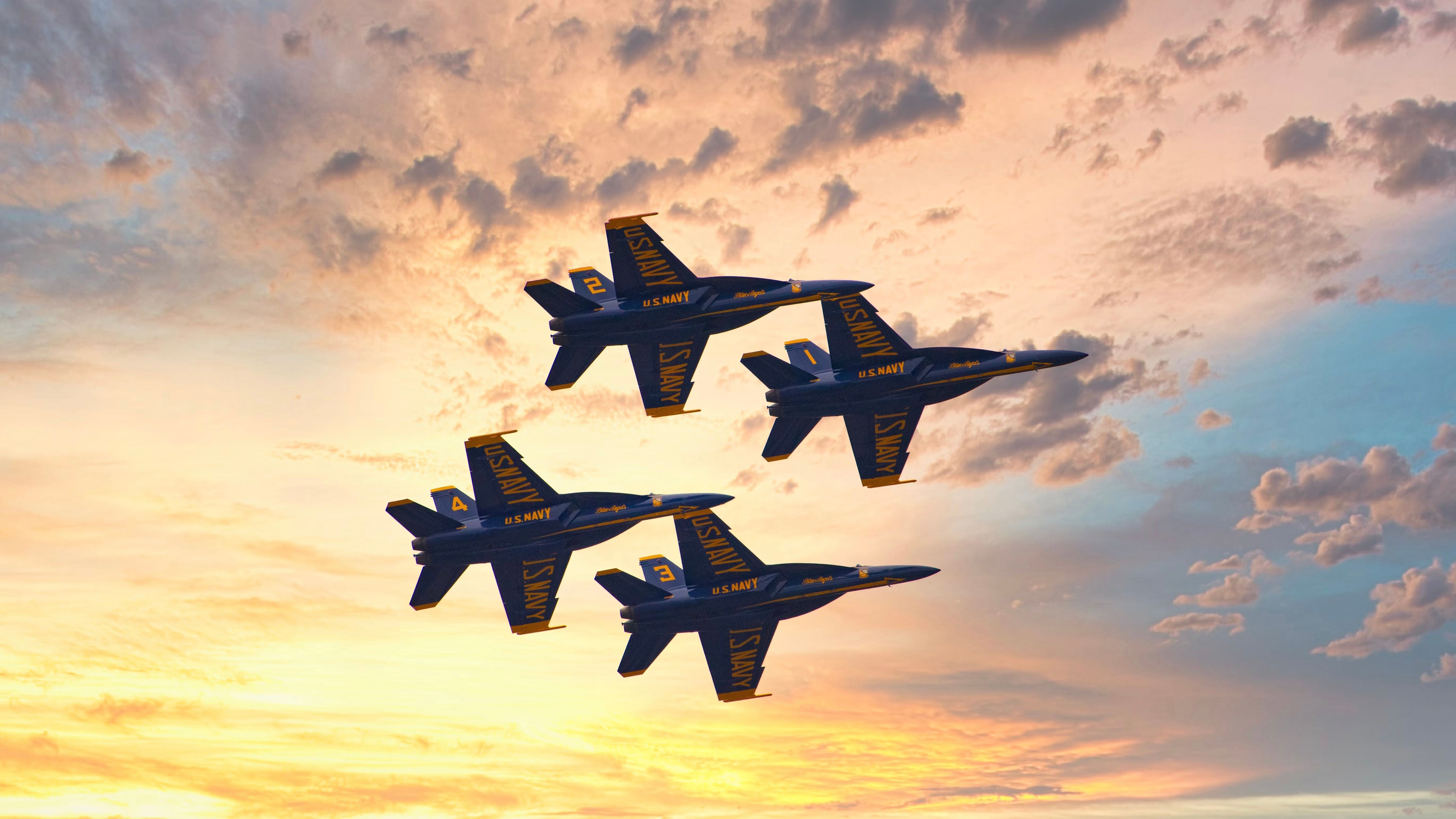Summary
- The Blue Angels team has 17 officers, 100 enlisted marines, and sailors, showcasing US naval aviation.
- The team performs high-speed maneuvers and formation flights, bringing naval and marine experience to communities.
- Show seasons run March-November, reaching over 11 million people yearly through flybys, air shows, and visits.
This year marks the 78th anniversary of the Blue Angels, a team of US Forces men and women dedicated to showcasing the power, pride, and professionalism of the United States Navy and Marine Corps. Through their presence, they bring US Naval aviation to communities nationwide, participating in air shows, flybys, and other showcasing events. This article explores the Blue Angles squadron’s mission, roles, and responsibilities.
The Blue Angels team
The US Navy’s flight demonstration squadron stuns audiences nationwide with its high-speed maneuvers. It serves as the ambassador of US naval aviation. According to the US Navy, various functional divisions within the Blue Angels team are established that are served by the Navy and Marine Corps.
Photo: Seafair
Officers
A total of 17 officers voluntarily serve with the Blue Angels. The team typically selects three tactical (fighter or fighter/attack) jet pilots, two support officers, and one Marine Corps C-130 pilot to relieve departing members each year.
Enlisted Team
The enlisted maintenance and support team comprises approximately 100 marines and sailors. Typically, they are grouped into two teams that alternate between each show site. Career-oriented enlisted personnel can take on the Blue Angels’ duties after an extensive screening process. After completing their responsibilities with the team, they can return to their careers in the Navy or the Marine Corps. The US Navy states,
“Selected enlisted personnel volunteer for a three-year tour with the squadron. Though every team member brings skills in a distinct job specialty, each is expected to work beyond that specialty, contributing to the overall effectiveness of the Blue Angels. The squadron consists of seven distinct departments, jointly responsible for guaranteeing command readiness. A tribute to this dedicated team is the fact that the Blue Angels have never canceled an air show due to a maintenance problem.”
Photo: Airman 1st Class De’Quan Simmons | U.S. Air Force
Technical representatives
The team comprises five technical representatives, including logistics, IT advisors, and financial analysts.
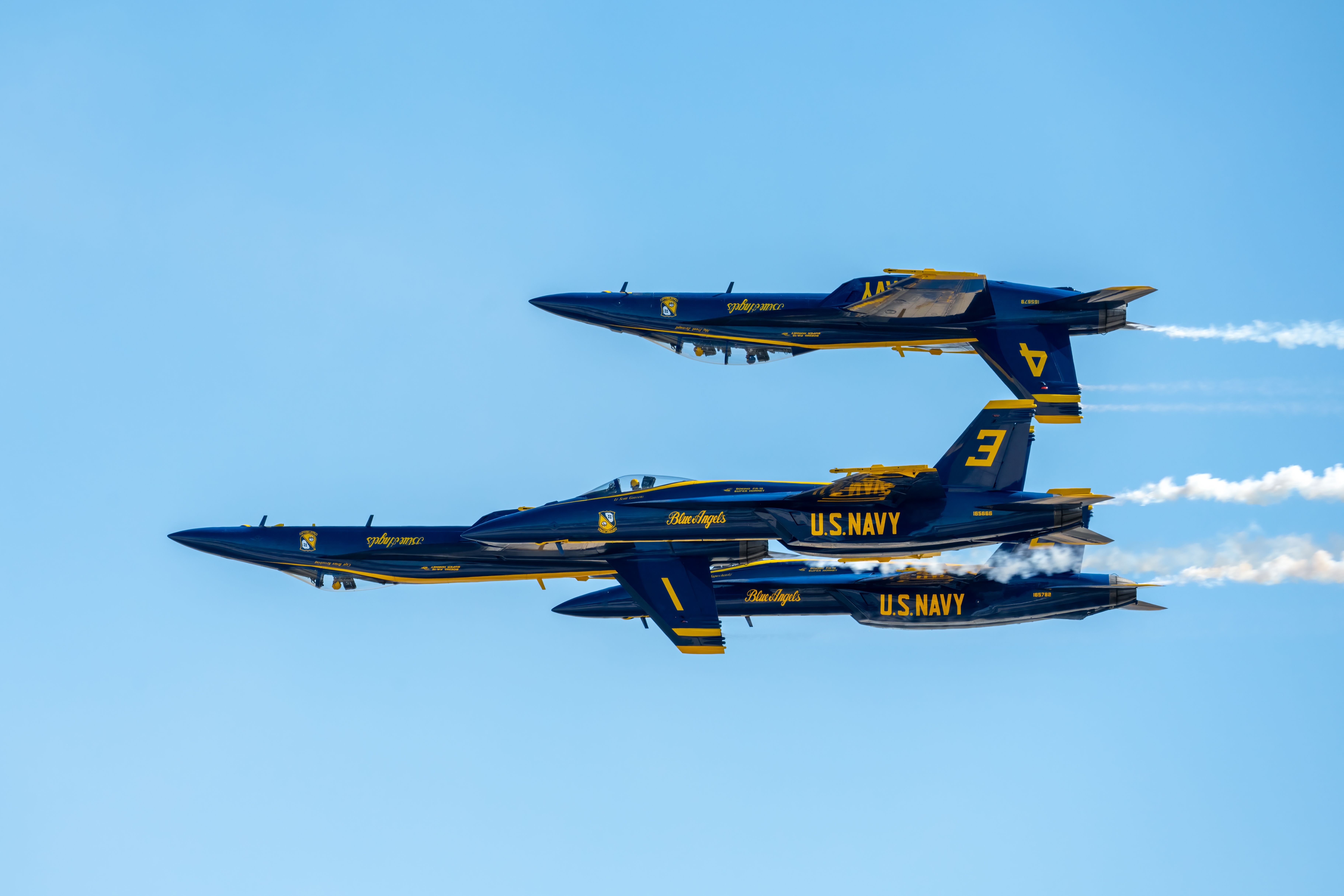
Related
How Are Pilots Selected To Fly For The Blue Angels Display Team?
Getting this coveted job is no easy task.
Commitment to show seasons
The team performs for over 11 million people each year conducting flybys, air demonstrations, stunts, and other specific power displays. The members of the squadron also visit schools and hospitals, increasing their reach by an additional 50,000 to 100,000 people each year. Show seasons typically run between March and November, allowing some downtime during winter. During the peak of the COVID-19 pandemic, the Blue Angels team performed several flyovers over cities to cheer and honor healthcare workers.
Photo: fotosteve | Shutterstock
The team aims to share the United States Naval and Marine Corps experiences and showcase the power to small and large communities. Such shows demonstrate the large military presence protecting and defending the United States seas while working closely with allied forces.
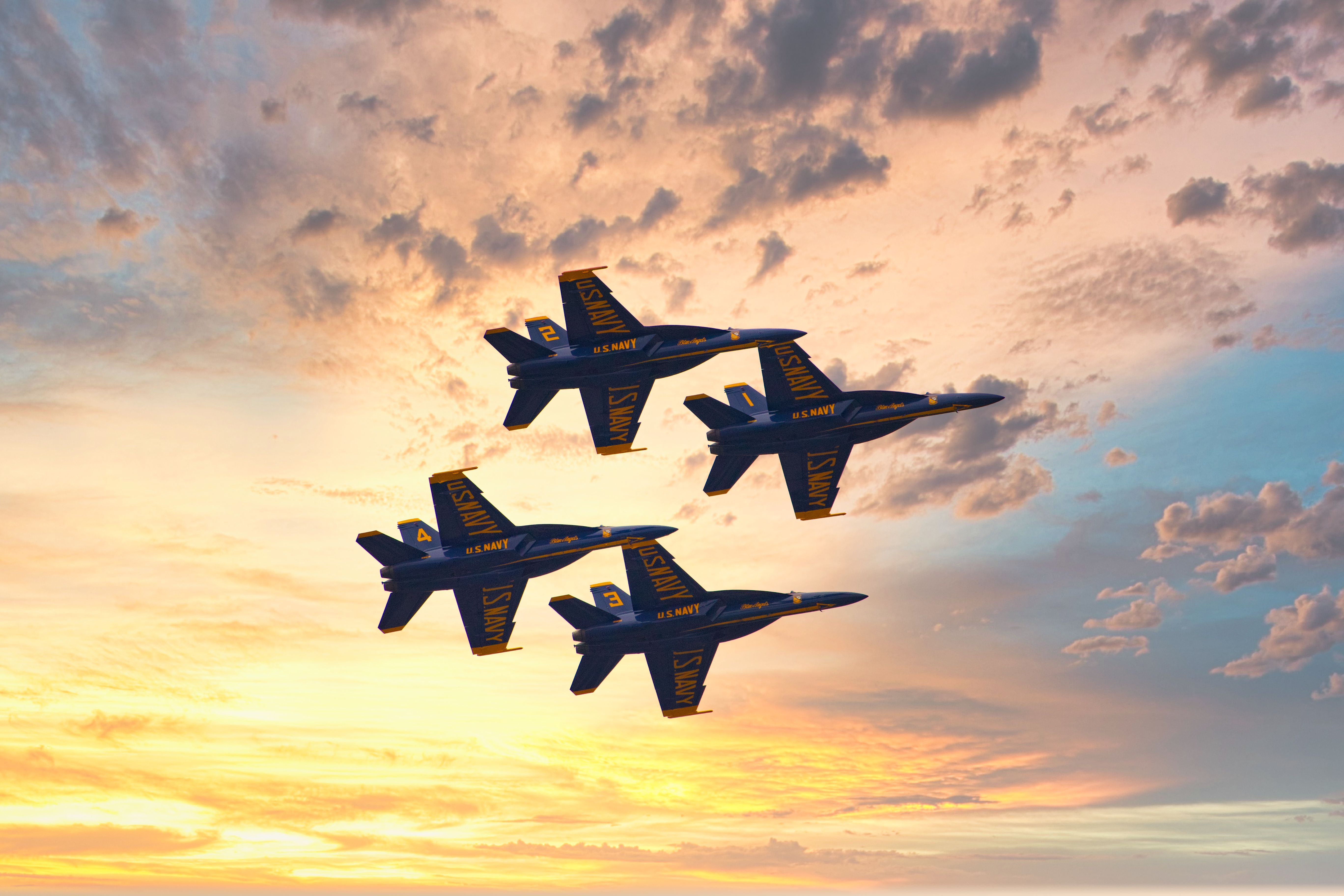
Related
How Much Training Must Blue Angels Pilots Undertake To Join The Famous Display Team?
The famous display team has a hefty bar for new pilots to clear.
Flight formation and maneuvers
The Blue Angels squadron performs many maneuvers and formation flights during their performance shows nationwide. Flying six McDonnell Douglas F/A-18 Super Hornets, the team demonstrates formation flying in The Diamond – a tight formation at low speeds of approximately 400 mph. The team performs loops, roles, and transitions. According to the USO.org blog,
“The flight formations of the Blue Angels require a great deal of skill and precision, with many of them performed under high g-force, the force of gravity or acceleration on a pilot’s body, and very close to one another.”
Popular maneuvers
- The Opposing Knife-Edge Pass: Performed by two solo pilots on opposite sides of the runway, they fly their planes directly toward one another. Upon simultaneously reaching the center point, they disperse in either direction at a 90-degree angle.
- The high-speed Sneak Pass: The aircraft flies at approximately 700 mph, just under Mach 1, showcasing a roaring sound.
- The Diamond 360: Four pilots perform this performance, flying aircraft in a diamond formation with planes only 18 inches apart. Given the speed and aircraft proximity, it is one of the most jaw-dropping performances.
Photo: Kirk Wester I Shutterstock
The Commanding Officer of Blue Angels states,
“Our team looks forward to showcasing the mainstay of modern naval air power operating off U.S. aircraft carriers, the combat-proven F/A-18 Super Hornet, along with the Marine Corps’ premiere logistics support aircraft, the C-130J Super Hercules. Both of these aircraft are operating around the world and around the clock carrying out the mission of our Navy and Marine Corps team.”
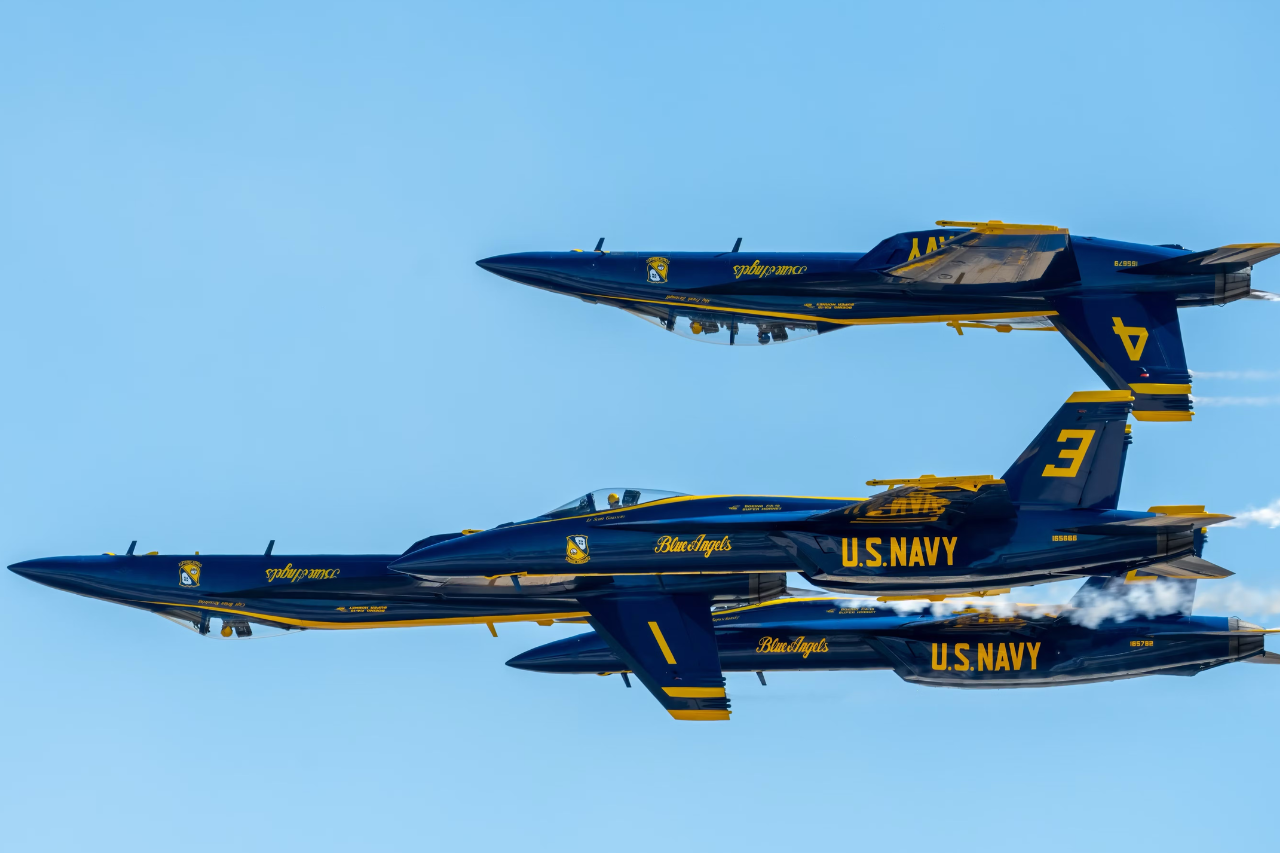
Related
How Are Blue Angels Planes Modified For Air Displays?
The changes go far beyond appearance.
What are your thoughts on the roles, responsibilities, and performances of the Blue Angels team? Have you ever watched a Blue Angels performance during an air show or a flyover demonstration? Share your experience in the comments section.

